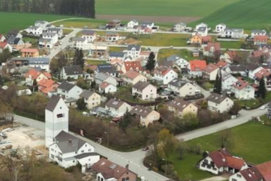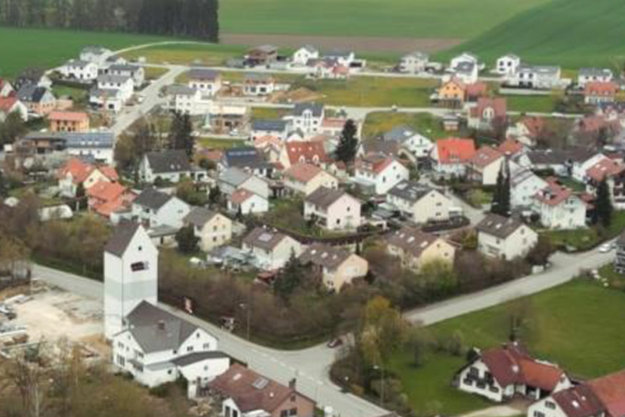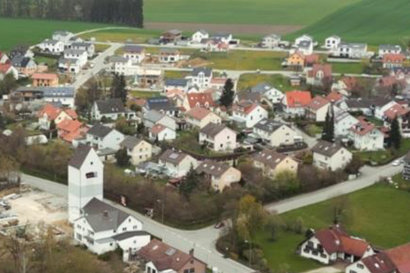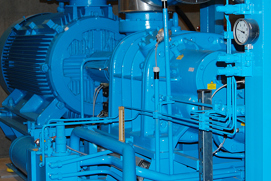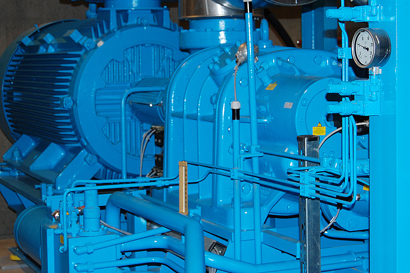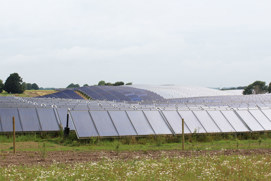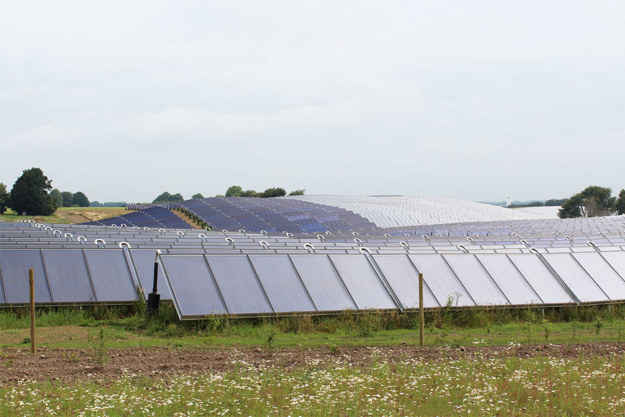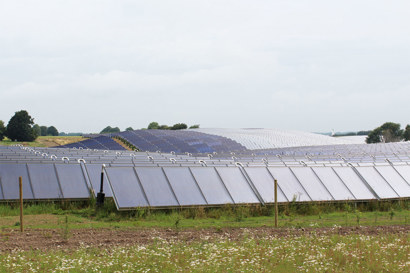Self-acting, medium-operated proportional controller, which through automatic opening of the valve prevents exceeding pressure before the valve (SAVA) and behind the valve (SAVD). The actuator features two diaphragms, which enable the valve to open in case of a defect at the control diaphragm. The controller is mainly used in district heating systems.
Function of the SAVA controller: the high upstream pressure in front of the valve is led to the lower part (high pressure connection) of the diaphragm inside the controller. Through a channel in the controller, the medium pressure is led from the valve to the upper side (low pressure connection) of the diaphragm.
The spring power of the control valve now affects the diaphragm, thus determining the effective differential pressure.
Function of the SAVD controller: the valve outlet pressure of the valve is led to the lower part (high pressure connection) of the diaphragm inside the controller. The upper side (low pressure connection) of the diaphragm is connected to the atmosphere. The spring power of the control valve now affects the diaphragm, thus determining the closing pressure.
Features and benefits
Eliminates pressure variations and provide optimum operating conditions with improved temperature control quality
Made for demanding systems, resistant to corrosion, cavitation and dirt
Connected system is protected against pressure surges, fluctuations, cavitation and noise

Differential pressure and flow controllers in district heating or cooling systems (variable flow)
Balance your network, save energy and improve end user comfort by hydronic balancing and control of district energy networks.
Tools and apps
Software tools
FAQ
Case studies
-
if (isSmallPicture) {


 Successful transition from oil boilers to a local heating network in Eurasburg
Successful transition from oil boilers to a local heating network in EurasburgIn the Wittelsbacher Land near Augsburg the local network in Eurasburg supplies heat to 80 buildings using a wood chip heating system. Danfoss’ substations ensure efficient heating in all building types, and its modern SCADA solution enables remote system monitoring and management.
-
if (isSmallPicture) {


 A cost-effective solution: district cooling in central Copenhagen
A cost-effective solution: district cooling in central CopenhagenEnergy efficiency was a major consideration in the design of Copenhagen’s district cooling project, where VLT® drives contribute to reducing CO2 emissions by more than 3000 t annually.
-
if (isSmallPicture) {


 Solar heating plant reduces CO2 emissions by 15,700 tonnes annually
Solar heating plant reduces CO2 emissions by 15,700 tonnes annuallyThe world’s largest solar heating plant in Silkeborg, Denmark harnesses energy to heat the homes and workplaces of 40,000 citizens. It supplies 18-20% of the annual heat consumption in the city of Silkeborg, Denmark, which has an ambitious target of CO2 neutrality in heat production by the year 2030.



